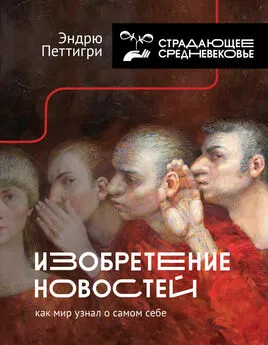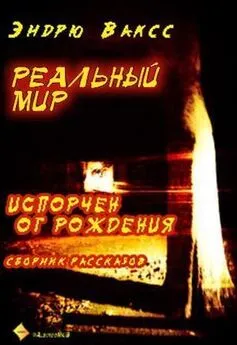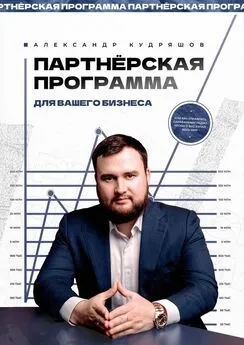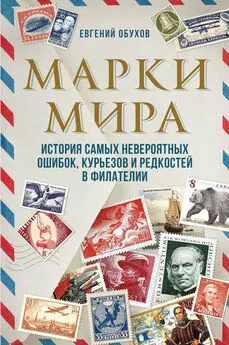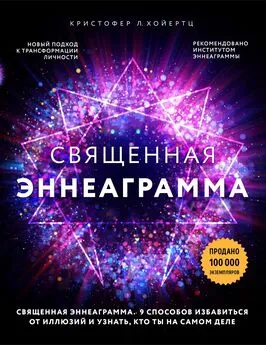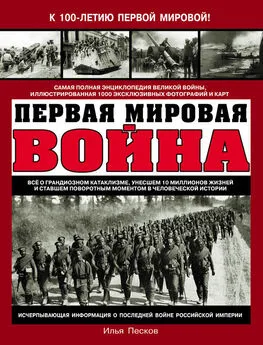Эндрю Петтигри - Изобретение новостей. Как мир узнал о самом себе
- Название:Изобретение новостей. Как мир узнал о самом себе
- Автор:
- Жанр:
- Издательство:АСТ
- Год:2021
- Город:Москва
- ISBN:978-5-17-127024-7
- Рейтинг:
- Избранное:Добавить в избранное
-
Отзывы:
-
Ваша оценка:
Эндрю Петтигри - Изобретение новостей. Как мир узнал о самом себе краткое содержание
Автор охватывает период почти в четыре века — от допечатной эры до 1800 года, от конца Средневековья до Французской революции, детально исследуя инстинкт людей к поиску новостей и стремлением быть информированными. Перед читателем открывается увлекательнейшая панорама столетий с поистине мульмедийным обменом, вобравшим в себя все доступные средства распространения новостей — разговоры и слухи, гражданские церемонии и торжества, церковные проповеди и прокламации на площадях, а с наступлением печатной эры — памфлеты, баллады, газеты и листовки. Это фундаментальная история эволюции новостей, начиная от обмена манускриптами во времена позднего Средневековья и до эры триумфа печатных СМИ.
В формате PDF A4 сохранен издательский макет.
Изобретение новостей. Как мир узнал о самом себе - читать онлайн бесплатно ознакомительный отрывок
Интервал:
Закладка:
264
Ancel, ‘Etude critique’, pp. 115-39.
265
Behringer, Im Zeichen des Merkur, p. 327.
266
Fitzler, Entstehung, p. 22.
267
Behringer, Im Zeichen des Merkur, p. 328.
268
Fitzler, Entstehung, p. 78. It was published as Warhafftige Abconterfectur und eigentlicher bericht der gewaltigen Schiffbrucken, Blochheusser und unerhorter wundergebew die der Printz von Barma vor der Statt Antorff auf dem Wasser hat bawen lassen. A copy is in the Munich State Library, Cod. Germ. 5864/2 f. 38.
269
Albert Ganado and Maurice Agius-Valada, A Study in Depth of 143 Maps Representing the Great Siege of Malta of 1565 (Valetta: Bank of Valetta, 1994).
270
Behringer, Im Zeichen des Merkur, pp. 330-1.
271
William S. Powell, John Pory, 1572–1636: The Life and Letters of a Man of Many Parts (Chapel Hill, NC: University of North Carolina Press, 1976).
272
G. R. Elton, Policy and Police: The Enforcement of the Reformation in the Age of Thomas Cromwell (Cambridge: Cambridge University Press, 1972).
273
Adam Fox, Oral and Literate Culture in England, 1500–1700 (Oxford: Oxford University Press, 2000), pp. 346, 349.
274
Peter Clark (ed.), Small Towns in Early Modern Europe (Cambridge: Cambridge University Press, 1995).
275
Adam Fox, ‘Rumour, News and Popular Political Opinion in Elizabethan and Early Stuart England’, Historical Journal, 40 (1997), p. 604.
276
Там же, с. 605.
277
Там же, с. 609.
278
Pieter Spierenburg, The Spectacle of Suffering (Cambridge: Cambridge University Press, 1984); Paul Friedland, Seeing Justice Done: The Age of Spectacular Capital Punishment in France (Oxford: Oxford University Press, 2012); David Nicholls, ‘The Theatre of Martyrdom in the French Reformation’, Past and Present, 121 (188), pp. 49–73; J. A. Sharpe, ‘Last Dying Speeches: Religion, Ideology and Public Execution in Seventeenth-Century England’, Past and Present , 107 (1985), pp. 144-67.
279
См. главу 4.
280
Для более реалистичного графика см. дело печально известного убийцы с топором Еноха ап Эвана, казненного в Шрусбери 20 августа 1633 года. К концу года были опубликованы две короткие брошюры. Peter Lake and Michael Questier, The Antichrist’s Lewd Hat: Protestants, Papists and Players in Post-Reformation England (New Haven, CT: Yale University Press, 2002), pp. 6–7.
281
Laurence Fontaine, History of Pedlars in Europe (Durham, NC: Duke University Press, 1996).
282
Clive Griffin, ‘Itinerant Booksellers, Printers and Pedlars in Sixteenth-Century Spain and Portugal’, in Robin Myers, Michael Harris and Giles Mandelbrote, Fairs, Markets and the Itinerant Book Trade (London: British Library, 2007), pp. 43–59.
283
E. M. Wilson, ‘Samuel Pepys’s Spanish Chapbooks’, Transactions of the Cambridge Bibliographical Society, 2 (1955-7), pp. 127-54, 229-68, 305-22.
284
Clive Griffin, Journeymen Printers, Heresy and the Inquisition in Sixteenth-Century Spain (Oxford: Oxford University Press, 2005).
285
Alastair Duke, ‘Posters, Pamphlets and Prints’, in his Dissident Identities in the Early Modern Low Countries (Aldershot: Ashgate, 2009), pp. 157-77.
286
F. Madan, ‘The Daily Ledger of John Dorne, 1520’, in C. R. L. Fletcher (ed.), Collectanea (Oxford: Oxford Historical Society, 1885), pp. 71-177.
287
Rosa Salzberg and Massimo Rospocher, ‘Street Singers in Italian Renaissance Urban Culture and Communication’, Cultural and Social History, 9 (2012), pp. 9-26.
288
Giancarlo Petrella, ‘Ippolito Ferrarese, a Travelling “Cerratano” and Publisher in Sixteenth-Century Italy’, in Benito Rial Costas (ed.), Print Culture and Peripheries in Early Modern Europe (Leiden: Brill, 2013), pp. 201-26.
289
Salzberg and Rospocher, ‘Street Singers’.
290
Massimo Rospocher, ‘Print and Political Propaganda under Pope Julius II (1503–1513)’, in Pollie Bromilow (ed.), Authority in European Book Culture (New York: Ashgate, 2013).
291
Salzberg and Rospocher, ‘Street Singers’.
292
Cantique de victoire pour lEglise de Lyon. A Lyon, Le jour de la victoire, dernier du mois d’Avril. 1562 (Lyon: Jean Saugrain, 1562). USTC 37138.
293
The conclusion, and telling phrase of Rosa Salzberg. Salzberg and Rospocher, ‘Street Singers’.
294
См. главу 5.
295
Tommaso Garzoni, La piazza universale di tutte le professionini del mondo (1585).
296
Andrew Pettegree, Reformation and the Culture of Persuasion (Cambridge: Cambridge University Press, 2005), Chapter 3.
297
Nathan Rein, The Chancery of God: Protestant Print, Polemic and Propaganda against the Emperor, Magdeburg 1546–1551 (Aldershot: Ashgate, 2008).
298
Приложение к изданию: Thomas Kaufmann, Das Ende der Reformation: Magdeburgs “Herrgotts Kanzlei” (1548–1551/2) (Tubingen: Mohr Siebeck, 2003).
299
Rebecca Wagner Oettinger, Music as Propaganda in the German Reformation (Aldershot: Ashgate, 2001), p. 137, and the chapter, ‘Popular Song as Resistance.’
300
Wagner Oettinger, Music as Propaganda, pp. 118-19. Oettinger’s table 4.2 (p. 113)
301
Jane Finucane, ‘Rebuking the Princes: Erasmus Alber in Magdeburg, 1548–1552’, in Bromilow (ed.), Authority in European Book Culture. For Alber’s works, Kaufmann, Ende der Reformation , appendix I and pp. 371-97.
302
Allyson Creasman, Censorship and Civic Order in Reformation Germany, 1517–1648 (Aldershot: Ashgate, 2012), pp. 27–30, 73.
303
Там же, с. 106.
304
Там же, с. 147–84. See also on the Calendar controversies C. Scott Dixon, ‘Urban Order and Religious Coexistence in the German Imperial City: Augsburg and Donauworth, 15481608’, Central European History (2007), 40, pp. 1-33.
305
Alexander J. Fisher, ‘Song, Confession and Criminality: Trial Records as Sources for Popular Music Culture in Early Modern Europe’, Journal of Musicology, 18 (2001), pp. 616-57.
306
Creasman, Censorship and Civic Order .
307
Allyson F. Creasman, ‘Lies as Truth: Policing Print and Oral Culture in the Early Modern City’, in Marjorie Plummer and Robin Barnes (eds), Ideas and Cultural Margins in Early Modern Germany (Aldershot: Ashgate, 2009), pp. 255-70.
308
Tessa Watt, Cheap Print and Popular Piety, 1550–1640 (Cambridge: Cambridge University Press, 1991); Natasha Wurzbach, The Rise of the English Street Ballad, 1550–1650 (Cambridge: Cambridge University Press, 1990); Christopher Marsh, Music and Society in Early Modern England (Cambridge: Cambridge University Press, 2010).
309
Marsh, Music and Society , p. 255.
310
Там же, с. 251.
311
Nancy Lyman Roelker, The Paris of Henry of Navarre as Seen by Pierre de LEstoile (Cambridge, MA: Harvard University Press, 1958).
312
Patricia Fumerton and Anit Guerrini, ‘Introduction: Straws in the Wind’, in their Ballads and Broadsides in Britain, 1500–1800 (Aldershot: Ashgate, 2010), p. 1.
313
Marsh, Music and Society , pp. 245-6.
314
Там же, с. 246.
315
Alan Everitt, ‘The English Urban Inn, 1560–1760’, in idem, Perspectives in English Urban History (London: Macmillan, 1973), pp. 91-137, here p. 93; see also Peter Clark, The English Alehouse: A Social History, 1200–1830 (London: Longman, 1983).
316
Peter Spufford, Power and Profit: The Merchant in Medieval Europe (London: Thames and Hudson, 2002), pp. 205-6.
317
Everitt, ‘English Urban Inn’, pp. 104-5.
318
Beat Kumin, Drinking Matters: Public Houses and Social Exchange in Early Modern Central Europe (London: Palgrave Macmillan, 2007), p. 121.
319
Там же.
320
Там же, с. 134–5.
321
Famously, the White Horse Tavern in Cambridge. Elisabeth Leedham-Green, A Concise History of the University of Cambridge (Cambridge: Cambridge University Press, 1996), p.44.
322
M. Kobelt-Groch, ‘Unter Zechern, Spielern und Haschern. Tauter im Wirtshaus’, in N. Fischer and M. Kobelt-Groch (eds), Aussenseiter zwischen Mittelalter und Neuzeit (Leiden: Brill, 1997), pp. 111-26.
323
Tom Scott, Freiburg and the Breisgau: Town-Country Relations in the Age of Reformation and Peasants’ War (Oxford: Oxford University Press, 1986).
324
Hans-Christoph Rublack (ed.), ‘The Song of Contz Anahans: Communication and Revolt in Nordlingen, 1525’, in R. Po-Chia Hsia (ed.), The German People and the Reformation (Ithaca, NY: Cornell University Press, 1988), pp. 108-9.
325
Clive Griffin, Journeymen-Printers, Heresy and the Inquisition in Sixteenth-Century Spain (Oxford: Oxford University Press, 2005).
326
Kumin, Drinking Matters, p. 129.
327
Michael Frank, ‘Satan’s Servants or Authorities’ Agent? Publicans in Eighteenth-Century Germany’, in Beat Kumin and B. Ann Tlusty (eds), The World of the Tavern: Public Houses in Early Modern Europe (Aldershot: Ashgate, 2002), p. 32. See also B. Ann Tlusty, Bacchus and Civic Order: The Culture of Drink in Early Modern Germany (Charlottesville, VA: University of Virginia Press, 2001).
328
Fox, Oral and Literate Culture, p. 364.
329
Там же, с. 369.
Читать дальшеИнтервал:
Закладка:
